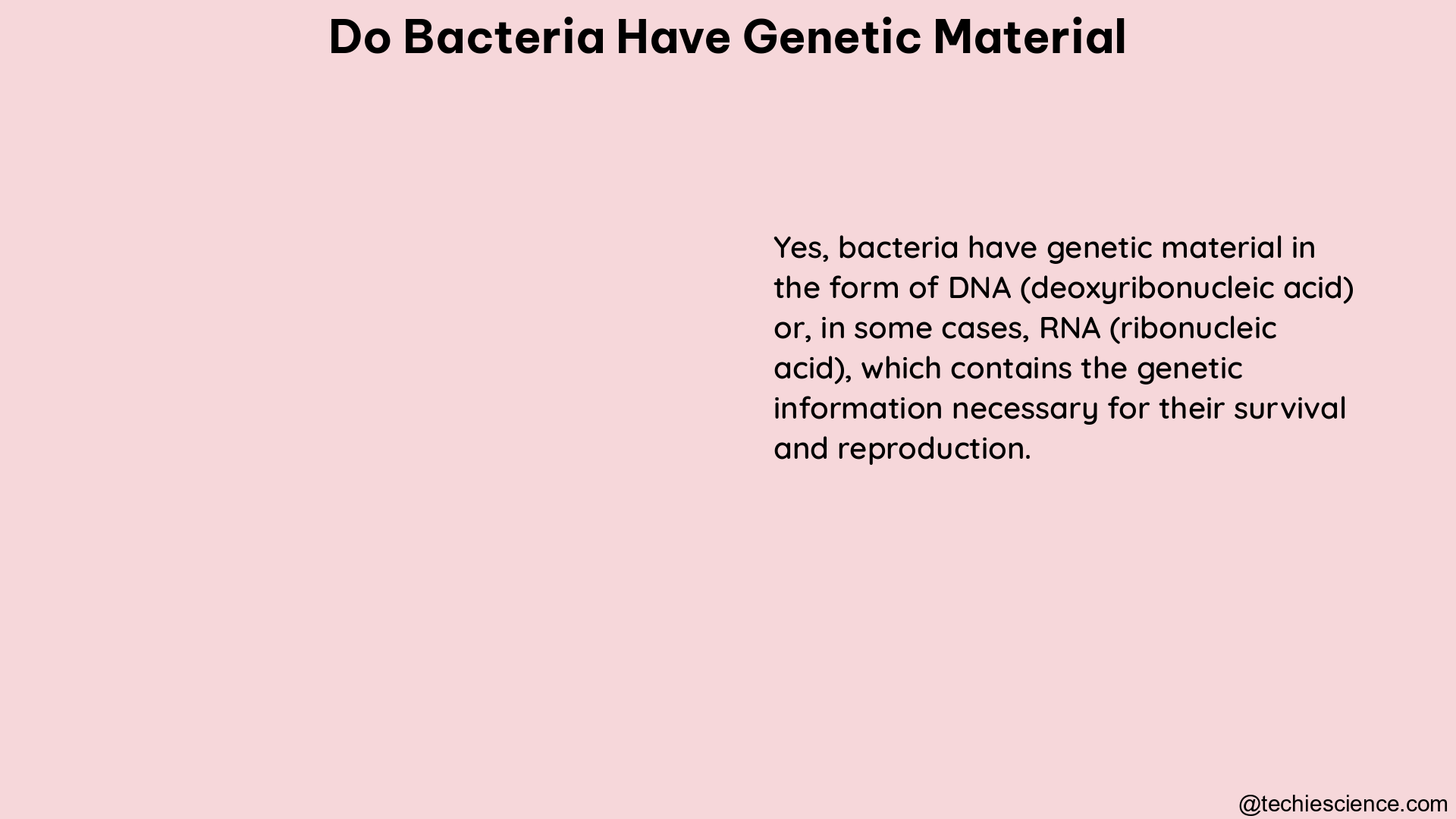Bacteria, the microscopic single-celled organisms, are known to possess genetic material in the form of DNA (deoxyribonucleic acid). This genetic material is essential for their growth, development, and reproduction, as it contains the instructions necessary for these vital processes.
Bacterial Chromosomes: The Genetic Powerhouse
Bacteria typically have a single circular chromosome, although some species may contain two chromosomes or even have linear chromosomes. The amount of DNA in bacterial chromosomes varies significantly, ranging from as little as 580,000 base pairs in some bacteria to as much as 13 million base pairs in others. For instance, the chromosome of the well-known bacterium Escherichia coli (E. coli) contains approximately 4.7 million base pairs, while the chromosome of Myxococcus xanthus contains roughly 9.45 million base pairs. If the E. coli chromosome were to be stretched out to its fullest extent, it would measure approximately 1.2 millimeters in length.
Genetic Information Storage: The DNA Sequence

The genetic information of bacteria is stored in the sequence of nitrogenous bases within the DNA molecule. These bases include adenine (A), cytosine (C), guanine (G), and thymine (T). The rules of base pairing in double-stranded DNA molecules dictate that the number of adenine and thymine bases must be equal, and the number of cytosine and guanine bases must also be equal.
The relationship between the number of G-C base pairs and A-T base pairs is an important indicator of evolutionary and adaptive changes within an organism. This ratio, known as the G+C content or molar ratio, can be calculated as the percentage of G+C bases out of the total number of bases (A+T+G+C). The G+C content in prokaryotes (including bacteria) can vary significantly, ranging from around 25% in most Mycoplasma species to approximately 50% in E. coli, and up to nearly 75% in Micrococcus, actinomycetes, and fruiting myxobacteria.
Plasmids: Auxiliary Genetic Elements
In addition to the main chromosome, bacteria can also carry smaller, circular DNA molecules called plasmids. These plasmids can carry auxiliary genetic information and can be replicated and passed on to the bacterial offspring during cell division. Plasmids often encode fitness-enhancing features, such as antibiotic resistance or the ability to degrade specific compounds. However, some bacteria also harbor “cryptic” plasmids that do not confer any obvious advantages.
Genetic Material Transfer: Transformation and Beyond
Bacteria can acquire new genetic material through a process called transformation, where they take up DNA from their environment, often from other bacteria that have shed their genetic material. If the DNA is in the form of a circular plasmid, it can be replicated and passed on to the receiving bacterial cell and its descendants. This process of horizontal gene transfer allows bacteria to acquire new traits and adapt to changing environmental conditions.
In addition to transformation, bacteria can also exchange genetic material through other mechanisms, such as conjugation (direct cell-to-cell transfer of genetic material) and transduction (transfer of genetic material via bacteriophages, or viruses that infect bacteria).
Implications and Significance
The presence of genetic material in bacteria has profound implications for their biology, evolution, and interactions with their environment. The diversity of bacterial genomes, as reflected in the wide range of G+C content, provides insights into the evolutionary adaptations and ecological niches occupied by different bacterial species. Additionally, the ability of bacteria to acquire new genetic material through processes like transformation can contribute to the spread of antibiotic resistance and the emergence of novel pathogenic strains.
Understanding the genetic makeup of bacteria is crucial for various fields, including microbiology, biotechnology, and medicine. It enables researchers to study the genetic basis of bacterial functions, develop targeted antimicrobial strategies, and harness the potential of bacteria for industrial and environmental applications.
In conclusion, bacteria do possess genetic material in the form of DNA, which is stored in a single circular chromosome and sometimes in smaller, circular plasmids. This genetic information is essential for the growth, development, and reproduction of bacteria, and can be transferred between bacterial cells, allowing them to adapt to changing environments and acquire new traits.
References:
- Impact of recombination on bacterial evolution – PMC – NCBI
- Bacterial Gene Transfer byNatural Genetic Transformation in … – NCBI
- Bacteria – Genetic Content, DNA, Prokaryotes – Britannica
- Conjugation, transformation & transduction | Bacteria (article)
- A highly conserved and globally prevalent cryptic plasmid is … – NCBI

Hello, I am Bhairavi Rathod, I have completed my Master’s in Biotechnology and qualified ICAR NET 2021 in Agricultural Biotechnology. My area of specialization is Integrated Biotechnology. I have the experience to teach and write very complex things in a simple way for learners.